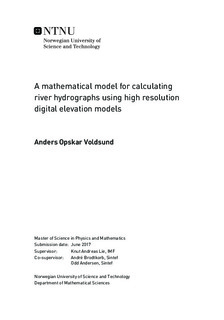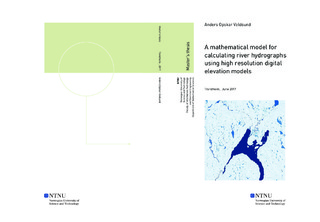| dc.description.abstract | Prediction of floods is important to prevent damage to human lives, build-
ings or infrastructure, and we have developed a simulation model to address
this. The model is a so-called distributed rainfall-runoff model, which accounts
for spatial variations within the watershed; it is based on a distributed version
of the time-area method (Clark, 1945). Travel times are calculated by assuming
that the flow can be modelled as creeping flow, and the resulting velocity field is
used to solve the so-called time-of-flight/Eikonal equation. Both topographical
and heterogeneous properties can be accounted for by the model, which ideally
can be used for both gauged and ungauged watersheds after calibration. An
automatic watershed delineation algorithm has been implemented to delineate
the river s watershed using the D8 Algorithm (O Callaghan and Mark, 1984).
To test our model, we create artificial rainfalls, and calculate the hydrograph re-
sponse at the watershed outlet. The model works well given the simplifications,
and is a framework which can be expanded upon and made more complex. | |

